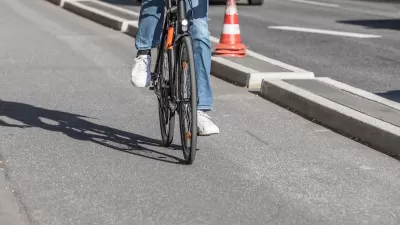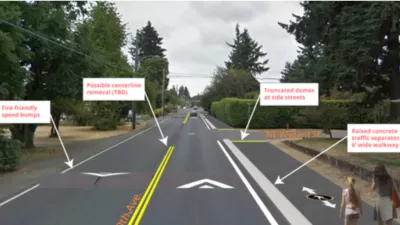Despite the high cost of car ownership, Americans walk less than almost any other nation, even for short trips that could be done on foot.

In 1797, future king of France Louis Philippe I wrote, upon visiting the newly formed United States of America, that “Americans are in the habit of never walking if they can ride.” Writing in Streetsblog, Kea Wilson reminds us that, even today, “Americans walk far less for transportation than residents of other industrialized nations.”
A study published in Sustainability reveals that “Of the 11 countries in the sample for which data was available for all trip purposes, the U.S. tied for last with notoriously car-dependent New Zealand among the populations that walk for the lowest percentage of overall trips (12 percent).” By contrast, walking made up 20 to 26 percent of trips in the U.K, France, Germany, Finland, and Norway.
“The authors of the study, though emphasize that there’s nothing that makes America an inherently pedestrian-hostile country — and that by adopting the transportation policies of our more active peer nations, we can overcome what may feel like an insurmountable collective obsession with cars.”
The study provides three key takeaways:
- It’s not just sprawl. Although Americans like to blame the country’s size and spread-out cities for a lack of walking, the study showed that Americans drive more often than their counterparts in other countries even for the shortest trips.
- Low-income Americans are often forced to walk, but also benefit from the least robust pedestrian infrastructure.
- American pedestrians are being killed at higher rates than elsewhere, and the problem is only growing.
FULL STORY: Exactly How Much Less America Walks Than Other Countries, In Five Charts

Alabama: Trump Terminates Settlements for Black Communities Harmed By Raw Sewage
Trump deemed the landmark civil rights agreement “illegal DEI and environmental justice policy.”

Planetizen Federal Action Tracker
A weekly monitor of how Trump’s orders and actions are impacting planners and planning in America.

The 120 Year Old Tiny Home Villages That Sheltered San Francisco’s Earthquake Refugees
More than a century ago, San Francisco mobilized to house thousands of residents displaced by the 1906 earthquake. Could their strategy offer a model for the present?

In Both Crashes and Crime, Public Transportation is Far Safer than Driving
Contrary to popular assumptions, public transportation has far lower crash and crime rates than automobile travel. For safer communities, improve and encourage transit travel.

Report: Zoning Reforms Should Complement Nashville’s Ambitious Transit Plan
Without reform, restrictive zoning codes will limit the impact of the city’s planned transit expansion and could exclude some of the residents who depend on transit the most.

Judge Orders Release of Frozen IRA, IIJA Funding
The decision is a victory for environmental groups who charged that freezing funds for critical infrastructure and disaster response programs caused “real and irreparable harm” to communities.
Urban Design for Planners 1: Software Tools
This six-course series explores essential urban design concepts using open source software and equips planners with the tools they need to participate fully in the urban design process.
Planning for Universal Design
Learn the tools for implementing Universal Design in planning regulations.
Clanton & Associates, Inc.
Jessamine County Fiscal Court
Institute for Housing and Urban Development Studies (IHS)
City of Grandview
Harvard GSD Executive Education
Toledo-Lucas County Plan Commissions
Salt Lake City
NYU Wagner Graduate School of Public Service





























